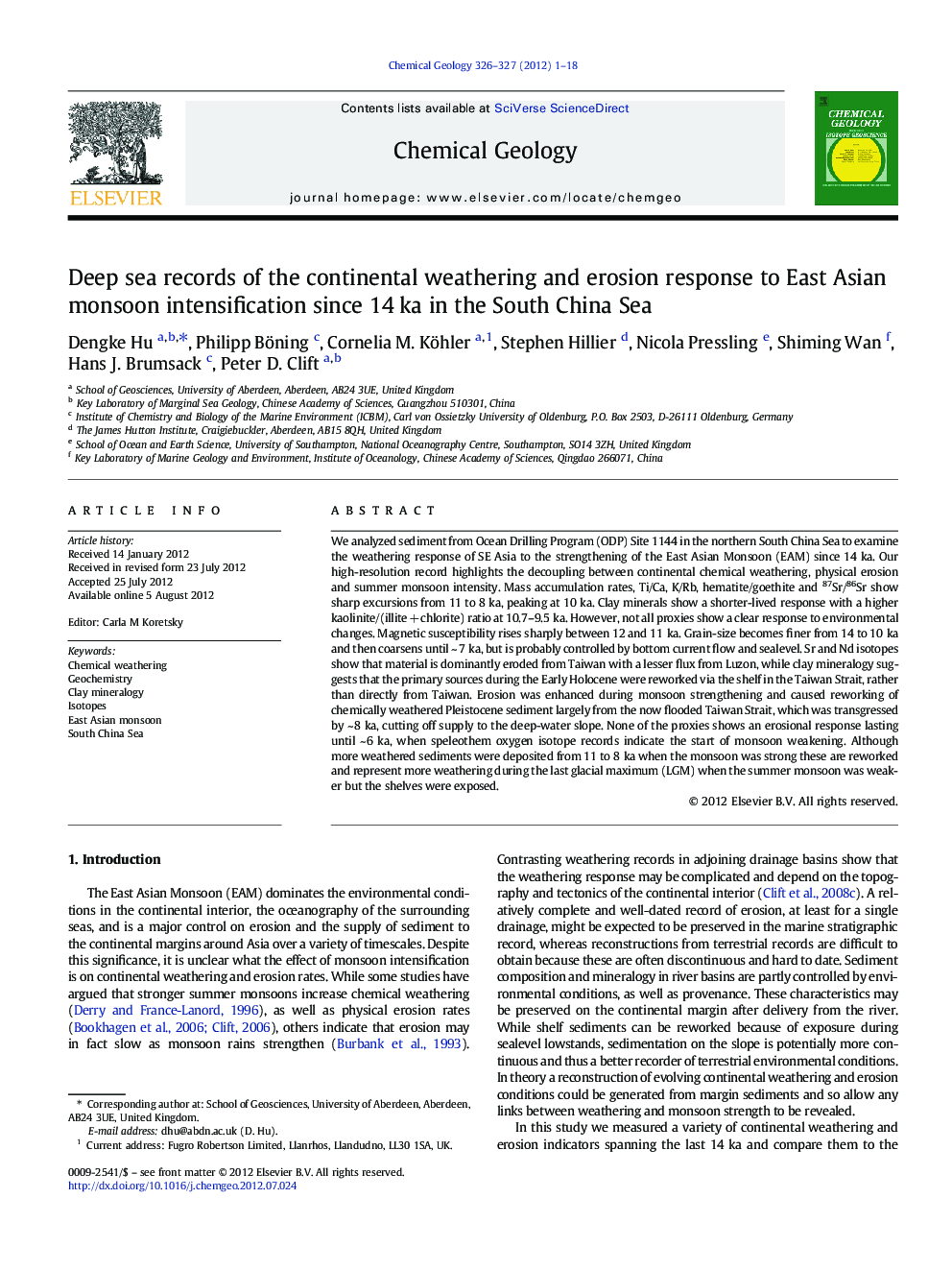| کد مقاله | کد نشریه | سال انتشار | مقاله انگلیسی | نسخه تمام متن |
|---|---|---|---|---|
| 4699273 | 1637638 | 2012 | 18 صفحه PDF | دانلود رایگان |

We analyzed sediment from Ocean Drilling Program (ODP) Site 1144 in the northern South China Sea to examine the weathering response of SE Asia to the strengthening of the East Asian Monsoon (EAM) since 14 ka. Our high-resolution record highlights the decoupling between continental chemical weathering, physical erosion and summer monsoon intensity. Mass accumulation rates, Ti/Ca, K/Rb, hematite/goethite and 87Sr/86Sr show sharp excursions from 11 to 8 ka, peaking at 10 ka. Clay minerals show a shorter-lived response with a higher kaolinite/(illite + chlorite) ratio at 10.7–9.5 ka. However, not all proxies show a clear response to environmental changes. Magnetic susceptibility rises sharply between 12 and 11 ka. Grain-size becomes finer from 14 to 10 ka and then coarsens until ~ 7 ka, but is probably controlled by bottom current flow and sealevel. Sr and Nd isotopes show that material is dominantly eroded from Taiwan with a lesser flux from Luzon, while clay mineralogy suggests that the primary sources during the Early Holocene were reworked via the shelf in the Taiwan Strait, rather than directly from Taiwan. Erosion was enhanced during monsoon strengthening and caused reworking of chemically weathered Pleistocene sediment largely from the now flooded Taiwan Strait, which was transgressed by ~ 8 ka, cutting off supply to the deep-water slope. None of the proxies shows an erosional response lasting until ~ 6 ka, when speleothem oxygen isotope records indicate the start of monsoon weakening. Although more weathered sediments were deposited from 11 to 8 ka when the monsoon was strong these are reworked and represent more weathering during the last glacial maximum (LGM) when the summer monsoon was weaker but the shelves were exposed.
► First high resolution multi-proxy weathering and erosion study in Holocene East Asia.
► Continental slope records can record environmental change but record is fragmentary.
► Mass accumulation rate, 87Sr/86Sr, K/Rb, clay minerals respond to intensified monsoon.
► Sealevel rise truncates records like hematite/goethite by flooding the source region.
► Stronger early Holocene weathering pulse is reworked from Last Glacial Maximum.
Journal: Chemical Geology - Volumes 326–327, 9 October 2012, Pages 1–18